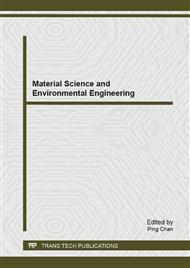p.330
p.336
p.341
p.346
p.351
p.357
p.363
p.370
p.375
The Research of the Rolling Element Bearing Fault Signal Frequency Domain Feature Extraction Method Based on the Wavelet Packet Decomposition
Abstract:
The wavelet packet decomposition can be used to extract the frequency band containing bearing fault feature, because the fault signal can be decomposed into different frequency bands by using the wavelet packet decomposition, that is to say the optimal wavelet packet decomposition node needs to be found. A method applying the average Euclidean distance to find the optimal wavelet packet decomposition node was presented. First of all, the bearing fault signals were decomposed into three layers wavelet coefficients by which the bearing fault signals were reconstructed. The peak values extracted from the reconstructing signal spectrum constructed a feature space. Then, the minimum average Euclidean distance calculated from the feature space indicated the optimal wavelet packet node. The optimal feature space could be constructed by the feature points extracted from the signals reconstructed by the optimal wavelet packet nodes. Finally, the optimal feature space was used for the K-means clustering. The feature extraction and pattern recognition test of the four kinds of bearing conditions under four kinds of rotation speeds was detailed. The test results show this method, which can extract the bearing fault feature efficiently and make the fault feature space have the lowest within-class scatter, wons a high pattern recognition accuracy.
Info:
Periodical:
Pages:
351-356
Citation:
Online since:
May 2014
Authors:
Price:
Сopyright:
© 2014 Trans Tech Publications Ltd. All Rights Reserved
Share:
Citation:


